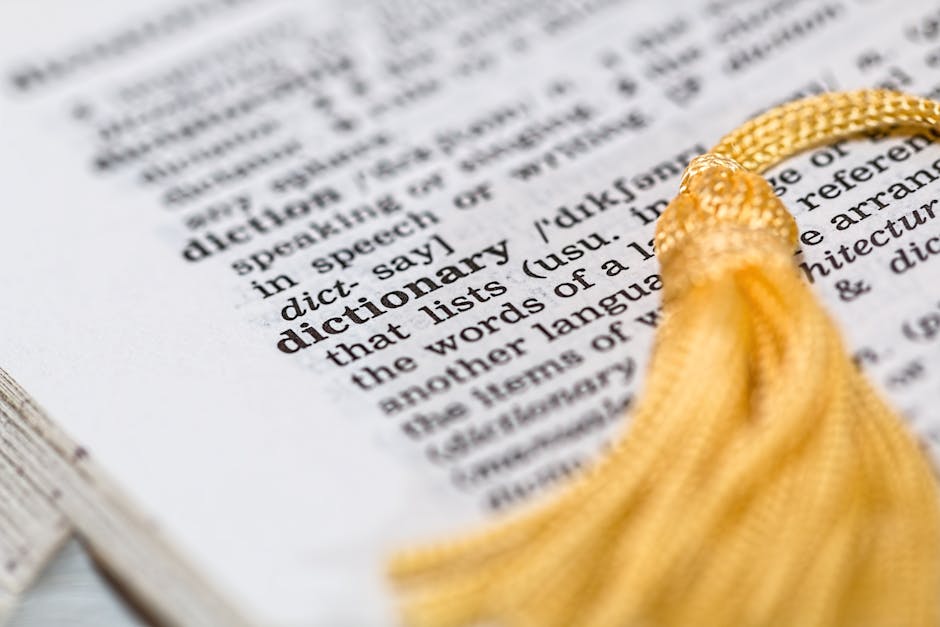DIN Definition: A Comprehensive Guide to German Industrial Standards
The term “DIN” frequently appears in technical specifications, product descriptions, and engineering documents. But what exactly does DIN mean? This comprehensive guide delves into the definition of DIN, its history, its significance in global standardization, and its impact across various industries.

What Does DIN Stand For?
DIN stands for Deutsches Institut für Normung, which translates from German to English as the German Institute for Standardization. It’s a non-profit organization responsible for developing and publishing technical standards for products, processes, and services in Germany and internationally.
Unlike some national standards bodies, DIN’s influence extends far beyond German borders. Many DIN standards have been adopted internationally, either directly or as the basis for other international standards.
The History of DIN
The origins of DIN can be traced back to the late 19th century, a time of rapid industrialization in Germany. The need for standardized measurements and specifications became increasingly apparent to facilitate trade, ensure product quality, and improve industrial efficiency. The formal establishment of the Verein Deutscher Ingenieure (VDI) – the Association of German Engineers – in 1856 laid the groundwork for future standardization efforts.

The normalization work began gaining momentum in the early 20th century, with various committees and initiatives working towards standardization. The official founding of the Deutsches Institut für Normung (DIN) dates back to 1917, solidifying the standardization efforts under a single umbrella organization.
Throughout its history, DIN has played a crucial role in shaping German industry and contributing to the development of international standards. Its impact on areas such as manufacturing, construction, and information technology has been profound.
How DIN Standards are Developed
The development of a DIN standard is a rigorous and collaborative process involving multiple stakeholders. This includes:
- Experts from industry and academia: These individuals contribute their technical expertise to shape the standard.
- Representatives from consumer organizations: Ensuring consumer interests are considered.
- Government agencies: Providing input from a regulatory perspective.
- International organizations: Collaborating with other standardization bodies to harmonize standards globally.
The process typically involves:
- Identifying a need for standardization: This often arises from issues such as interoperability, safety concerns, or the need for consistent quality.
- Developing a draft standard: Expert committees work together to draft a proposed standard.
- Public consultation: The draft standard is made available for public comment and feedback.
- Review and revision: The draft standard is reviewed and revised based on the feedback received.
- Approval and publication: Once approved, the standard is published and made available.
The Significance of DIN Standards
DIN standards hold significant importance for several reasons:
- Ensuring product quality and safety: Standards provide clear guidelines for manufacturers, ensuring consistency and reliability of products.
- Facilitating trade and commerce: Standardized products and processes make it easier for businesses to trade both domestically and internationally.
- Promoting interoperability: Standards help ensure different components and systems can work together seamlessly.
- Improving efficiency and productivity: Standardization simplifies processes, reduces waste, and improves overall efficiency.
- Protecting the environment: Some DIN standards focus on environmental sustainability and resource efficiency.
Examples of DIN Standards
DIN standards cover a vast range of areas. Some prominent examples include:

- DIN ISO 9001: A globally recognized standard for quality management systems.
- DIN EN ISO 14001: A standard for environmental management systems.
- DIN 476: Standards relating to fire protection.
- DIN 196-1: Standards specifying cement types.
- Various standards for paper sizes: DIN A4, DIN A3, etc.
DIN and International Standards
DIN actively participates in international standardization efforts, working closely with organizations like ISO (International Organization for Standardization) and IEC (International Electrotechnical Commission). Many DIN standards are aligned with or based on international standards, ensuring consistency and global compatibility.
Finding DIN Standards
DIN standards are available for purchase through the official DIN website and other authorized distributors. The website usually provides search functionalities, allowing users to find specific standards based on keywords or subject areas.
The Future of DIN
As technology advances and new challenges emerge, DIN continues to adapt and evolve. The organization plays a key role in addressing emerging technological trends and ensuring standards remain relevant and effective. Its focus on digitalization, sustainability, and international cooperation ensures that DIN standards continue to drive innovation and improvement across various industries.
Conclusion
The DIN definition extends beyond a simple acronym; it represents a crucial element in global standardization, ensuring product quality, safety, and interoperability. Understanding DIN and its role in various industries is critical for professionals across diverse fields. From engineers and manufacturers to consumers and policymakers, the impact of DIN standards is far-reaching and continues to shape the world around us.

